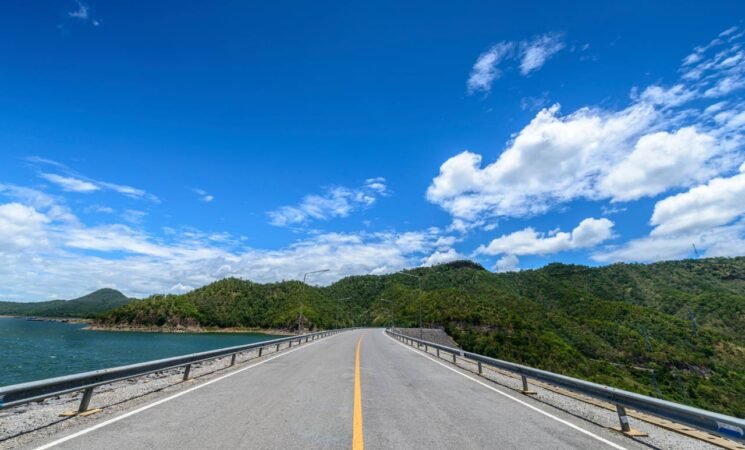13 September 2025, NIICE Commentary 11718
Hridbina Chatterjee
The India-Myanmar-Thailand (IMT) Trilateral Highway is a flagship project of India's Act East Policy, the strategic approach to economic and political ties with its East and Southeast Asian neighbors. Designed to create an uninterrupted land corridor to connect India to the markets of Southeast Asia, the 1,360-kilometer highway is envisioned as a platform for regional connectivity with the intent of facilitating trade, tourism, and people-to-people connectivity. However, the vision is complicated by a plethora of geopolitical and domestic realities, particularly in Myanmar, that converted the project into a geopolitical minefield.
A Vision for Regional Integration and Economic Opportunity
The Trilateral Highway, from Moreh in Manipur in India, to Mae Sot in Thailand, through Myanmar, is a great opportunity for India to connect with the Association of Southeast Asian Nations (ASEAN) countries. For India, it is part of the Act East Policy which aims to help the landlocked northeastern states of India gain economic and financial benefits from having direct access to a wider market. In effect, the highway is expected to lower both transportation costs and transit time for goods, which helps facilitate cross-border trade and investment. The Trilateral Highway was intended to be a complex that would generate job creation, create industrial development, and presumably raise the quality of living for some underdeveloped areas. For Thailand, the Trilateral Highway makes that a solid position to be presented to their investors as a region trades and connects themselves. In part, Myanmar will be expected to have better trade infrastructure and economic activities as a potential benefit to the highway. Besides trade connections, there is a general belief that the Trilateral Highway will sow seeds of a greater cultural understanding and foster more people-to-people connections to bind these three countries tighter together. In the long term, a vision is to have the Trilateral Highway extended to other ASEAN countries like Laos, Cambodia, and Vietnam to establish a larger "East-West Economic Corridor."
Contemporary Geopolitical Minefield: 2025 Dynamics
The year 2025 presents a stark contrast between the project's aspirational goals and its grim on-the-ground reality. The Trilateral Highway is a prime example of how geopolitical instability can derail even the most promising of infrastructure projects. The central and most significant obstacle to the highway's completion is the protracted civil war and political instability in Myanmar. Since the 2021 military coup, the country has been embroiled in widespread conflict, with the military junta fighting against a diverse coalition of ethnic armed groups and pro-democracy forces.
The instability has presented significant challenges in moving forward with the project. Major portions of the highway in Myanmar, especially in Chin State and Sagaing Region, are under control of or sites of combat between ethnic militias and the military. This renders construction next to impossible and almost unbearably dangerous for workers. As of Mid 2025, work on the Myanmar portions of the highway that India has undertaken the construction and upgrade management has been severely stalled. The violence has resulted in considerable delays, and the project that was earmarked for completion years ago now has an extended deadline of 2027.
The ongoing conflict in Myanmar has also created a complex diplomatic and security dilemma for India. The route passes through a part of Myanmar that is crucial to the security of India's Northeast. The instability and presence of armed groups raise concerns about cross-border insurgency, smuggling, and other illicit activities. India has to navigate a delicate diplomatic balance: dealing with the military junta while also acknowledging the on-the-ground power of ethnic armed groups who control key parts of the highway route. China, a major player in Myanmar, has reportedly used direct engagement with some of these ethnic militias to secure its own infrastructure projects, a tactic India has been hesitant to adopt but may need to consider.
China's Shadow and Competing Corridors
The Trilateral Highway project takes shape as India and China engage in an increasingly competitive search for leverage over Southeast Asia. China's Belt and Road Initiative (BRI) has generated considerable investments in regional connectivity projects, including in Myanmar. China has the advantage in its rapid implementation of large scale projects and its willingness to deal with military juntas or ethnic armed groups. For India, the Trilateral Highway is an important counterbalance to China's expansion. Slow progress of the project, however, will further diminish its credibility and India's ability to establish its strategic credibility.
The highway is much more than a road. It is a manifestation of India's "Act East Policy" and signifies India's determination to remain a partner in the Indo-Pacific. If the highway does not progress, it could be viewed as a victory for China and a blow to India's aspirations for regional influence. Geopolitically the stakes are high because the highway is also expected to be an alternative to Chinese-dominated supply chains and an avenue for greater economic and strategic collaboration with ASEAN.
Challenges Beyond Geopolitics
While the situation in Myanmar is the most pressing issue, the project also faces other significant challenges in 2025. Fristly, bureaucratic hurdles and inadequate infrastructure are persistent problems. Secondly, the lack of a comprehensive India-Myanmar-Thailand Trilateral Motor Vehicles Agreement (IMT-TMVA) remains a major roadblock. While a draft agreement has been in circulation for years, bureaucratic complexities and differing national regulations on permits, customs, and security checks continue to delay its finalization. Thirdly, issues relating to the terrain and the environment add to adjoining construction and maintenance. The passage, particularly in Myanmar and India's Northeast, keeps heavy rainfall, landslides, and flooding as the potential beyond construction challenges when work is progressing. Additionally, ethnic conflicts and insurgency in India's Northeast (including communal violence in Manipur) have been a constraint in the project because of the ongoing uncertainty in completing at least the Indian side of the highway.
Looking Ahead
The India-Myanmar-Thailand Trilateral Highway is an unquestionably important project that could greatly improve regional connectivity and enhance India's engagement in Southeast Asia. However, in 2025, it stands at a critical juncture, embodying the tension between geopolitical aspirations and ground realities. Geopolitically and economically, the rationales for the highway are still extremely strong, but it will encounter many obstacles. The future of the project lies in whether India can steer through Myanmar's civil conflict's perilous and complicated terrain, and show the level of diplomatic agility and strategic decisiveness that has been, thus far, lacking.
The highway bridges India to Myanmar and Thailand under the auspices of India's Act East Policy. Its successful construction and implementation would be a great success for India and would further embed India in a regional power role and provide a tangible alternative to China's growing role. At the same time, if there are continued delays or abandonment of the highway, it would be a major blow to India's credibility, and questioning India's ability to deliver large scale strategic infrastructure projects in its extended neighborhood. The future is not only long and winding, but it is a real geopolitical game of high-stakes, and prosperous success is still uncertain.
Hridbina Chatterjee is a Final Year Postgraduate Student of the Department of International Relations at Jadavpur University, Kolkata, India.
The views expressed here are the author's personal views.

